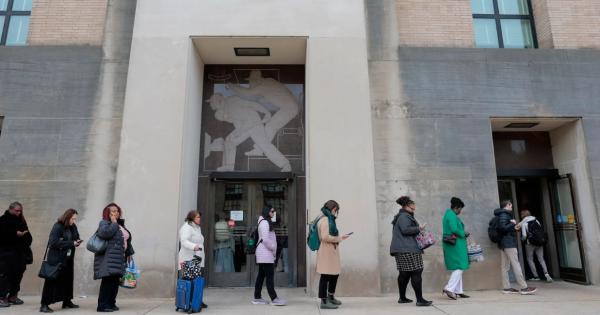Bitcoin's Record Surge Amid Tariff Uncertainty: A Hedge or a Bubble?
Isaac LaneFriday, Jul 11, 2025 10:34 pm ET
![]() 2min read
2min read
The price of Bitcoin surged to an all-time high of $118,780 in mid-2025, defying expectations in an environment of escalating trade tensions and S&P 500 volatility. This surge coincided with Donald Trump's aggressive tariff policies, which targeted allies and adversaries alike, creating uncertainty in global markets. The question arises: Is Bitcoin's rise a reflection of its efficacy as a safe-haven asset during geopolitical turmoil, or does it signal the formation of a speculative bubble? This analysis examines Bitcoin's correlation with equity markets, technical price dynamics, regulatory risks, and institutional adoption to assess its role in portfolio diversification.
Historically, Bitcoin was considered an uncorrelated asset, offering diversification benefits to equity-heavy portfolios. However, since 2020, its correlation with major indices like the S&P 500 has risen to , as measured by rolling 30-day returns. This shift is evident in mid-2025, when Trump's tariff threats triggered a 6.75%-point spike in U.S. import prices, fueling inflation fears and amplifying equity volatility.
The S&P 500 fell on the announcement of a 35% tariff on Canadian imports, while Bitcoin surged in the same period. This inverse relationship suggests investors are treating Bitcoin as a —a risk-on asset that thrives when equity markets rebound but also suffers during prolonged downturns. However, the correlation isn't purely defensive. During tariff-induced sell-offs in March 2025, Bitcoin fell alongside equities, highlighting its sensitivity to macroeconomic conditions.
On-chain metrics reinforce Bitcoin's bullish trajectory. Its —the total value of Bitcoin based on the price at which coins were last moved—jumped by $4.4 billion in Q2 2025, signaling sustained institutional buying. Meanwhile, the , a measure of profit/loss for holders, reached , near historical resistance at 2.75. Analysts estimate this could push Bitcoin toward $130,900 before encountering significant selling pressure.
Key technical levels to watch:
- : A post-pullback support zone where long-term holders accumulated in early 2025.
- : A psychological barrier and potential resistance if institutions slow their buying pace.
Despite its gains, Bitcoin faces existential risks. The U.S. Congress's in July 2025 intensified scrutiny over stablecoins, exchange regulation, and tax compliance. Proposals to classify Bitcoin as a commodity could clarify its legal status but might also expose it to margin requirements and volatility from futures markets.
Meanwhile, legal battles over Trump's tariffs—such as the stayed injunction against “fentanyl” tariffs—add uncertainty. A loss in the Federal Circuit appeal could destabilize markets, potentially derailing Bitcoin's rally if investors retreat to cash.
Institutional inflows have been a pillar of Bitcoin's growth. U.S. spot Bitcoin ETFs saw $1.2 billion in net inflows in Q2 2025, while corporate treasuries, including those of tech firms like Microsoft, allocated portions of their reserves to Bitcoin. This adoption reduces the asset's volatility over time but also ties its performance to macroeconomic trends. For example, a Federal Reserve rate hike—a response to tariff-driven inflation—could pressure both equities and Bitcoin.
Bitcoin's correlation with equities during stress periods suggests it's less of a standalone safe haven than a to portfolios. Investors should consider the following:
Bitcoin's surge to $118,780 is not a bubble but a reflection of its evolving role as a and institutional asset. Its correlation with equities underscores its inclusion in modern portfolios, though investors must balance its growth potential against regulatory and macro risks. For now, Bitcoin remains a compelling diversification tool—if managed with discipline.
You may also like...
Diddy's Legal Troubles & Racketeering Trial

Music mogul Sean 'Diddy' Combs was acquitted of sex trafficking and racketeering charges but convicted on transportation...
Thomas Partey Faces Rape & Sexual Assault Charges

Former Arsenal midfielder Thomas Partey has been formally charged with multiple counts of rape and sexual assault by UK ...
Nigeria Universities Changes Admission Policies

JAMB has clarified its admission policies, rectifying a student's status, reiterating the necessity of its Central Admis...
Ghana's Economic Reforms & Gold Sector Initiatives

Ghana is undertaking a comprehensive economic overhaul with President John Dramani Mahama's 24-Hour Economy and Accelera...
WAFCON 2024 African Women's Football Tournament

The 2024 Women's Africa Cup of Nations opened with thrilling matches, seeing Nigeria's Super Falcons secure a dominant 3...
Emergence & Dynamics of Nigeria's ADC Coalition

A new opposition coalition, led by the African Democratic Congress (ADC), is emerging to challenge President Bola Ahmed ...
Demise of Olubadan of Ibadanland
Oba Owolabi Olakulehin, the 43rd Olubadan of Ibadanland, has died at 90, concluding a life of distinguished service in t...
Death of Nigerian Goalkeeping Legend Peter Rufai

Nigerian football mourns the death of legendary Super Eagles goalkeeper Peter Rufai, who passed away at 61. Known as 'Do...





